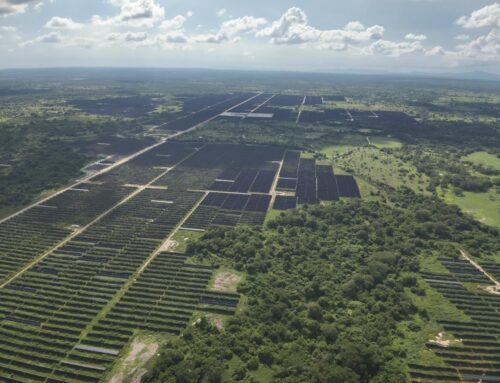Can climate change really create zombie fungi, like in “The Last of Us”?
April 12, 2025
With the hit HBO series “The Last of Us” returning for Season 2 on April 13, fans captivated by the terrifying concept of a fungal pandemic that turns humans into zombies once again face the question: How much of this chilling storyline is rooted in reality?
While the idea of fungi creating zombie-like humans may sound far-fetched, real scientists have studied the connection behind fungal evolution and climate change and the threats fungi can pose to different species.

Photograph by Liane Hentscher/HBO
Here’s what we know about the science that inspired the show’s premise:
Can cordyceps infect humans?
In “The Last of Us,” cordyceps — a real fungus that infects insects — evolves into a harmful pathogen for humans due to a warming climate. In reality, “zombie-ant fungus” or Ophiocordyceps unilateralis, is a parasitic fungus that infects and manipulates the behavior of carpenter ants, ultimately leading to their death.
Dr. Jim Kronstad, a microbiologist at the University of British Columbia, explains that it’s not possible for cordyceps fungi to adapt from infecting insects to humans. Our body temperature and immunity prevent most fungal species from adapting to the human body because they cannot survive beyond 98.6 degrees Fahrenheit.
In Season 1 of the TV series, which was adapted from a 2013 video game with the same name, the cordyceps zombies used tentacles to infect humans. But Season 2 reveals that the zombies have also evolved into spreading the fungi through airborne spores.
“That’s more realistic about the way humans do acquire fungal infections,” Kronstad said.
Climate change and fungal adaptation
In the opening scene of the show, an epidemiologist in 1968 theorized that climate change could fuel a fungal outbreak that would lead to a zombie apocalypse, and today, scientists are becoming more concerned that a warming planet is increasing the risk of fungal infections in humans.
As temperatures rise, some fungi may adapt to survive in warmer conditions, potentially making them more capable of infecting humans.
One real-world example of fungi becoming more widespread due to climate change is Valley fever, caused by the Coccidioides fungus. This pathogen thrives in hot, dry areas like the southwestern United States. When disturbed soil releases spores into the air, they can be inhaled, causing a flu-like illness that can become severe in some cases. Rising temperatures and prolonged droughts that make conditions drier have been correlated with a boost in the fungus’ growth and spread, experts say.
“There have been some really thoughtful and careful studies looking at how different levels of temperature change would influence drying and more arid conditions moving from the desert Southwest upwards through North America,” said Kronstad. This means that as the climate warms, the fungus may migrate to new areas, increasing the number of people at risk.
Last year, California saw a sharp rise in valley fever cases. While the Central Valley — particularly between Fresno and Bakersfield — has long been a hotspot, increasing temperatures are pushing the fungus further north. Areas like Sacramento and Northern California are now seeing increased infections, a trend scientists directly link to climate-driven shifts in temperature and soil conditions.
Threats to agriculture
Climate change and fungithreaten not only the human body, but also what goes into it.
As temperatures shift, plant-pathogenic fungi — those that damage or kill plants — may spread to areas where they weren’t previously a problem, possibly affecting agriculture and threatening global food security.
“Fungi are actually the most devastating causes of crop loss and threats to sustainability,” Kronstad told CBS News. “And climate change could affect that too as fungi move into other areas that might be where they didn’t actually cause disease before.”
Benefits as well as risks of fungi
Despite their terrifying portrayal in the series, fungi aren’t all bad. In fact, they play vital roles in ecosystems, including decomposing organic material and acting as carbon sinks.
“Fungi are super important, it’s phenomenal what they’ve done for humans,” Kronstad said. They are used in everything from pharmaceuticals to food production, and some even help recycle nutrients in ecosystems.
While a zombie apocalypse like the one in “The Last of Us” remains fictional, the way fungi respond to climate change is real and concerning. Scientists are closely monitoring how warming temperatures might make some fungi more resilient and adaptable, possibly leading to increased infections in both humans and crops.
So while we can continue to enjoy the TV show as science fiction, the idea that climate change could influence the spread and adaptation of harmful fungi is something scientists are taking seriously.
When is “The Last of Us” Season 2 premiere?
“The Last of Us” returns for its second season on Sunday, April 13, at 9 p.m. ET/PT on HBO and Max, bringing back the chilling world where fungal infections have transformed humanity.
Search
RECENT PRESS RELEASES
Related Post



